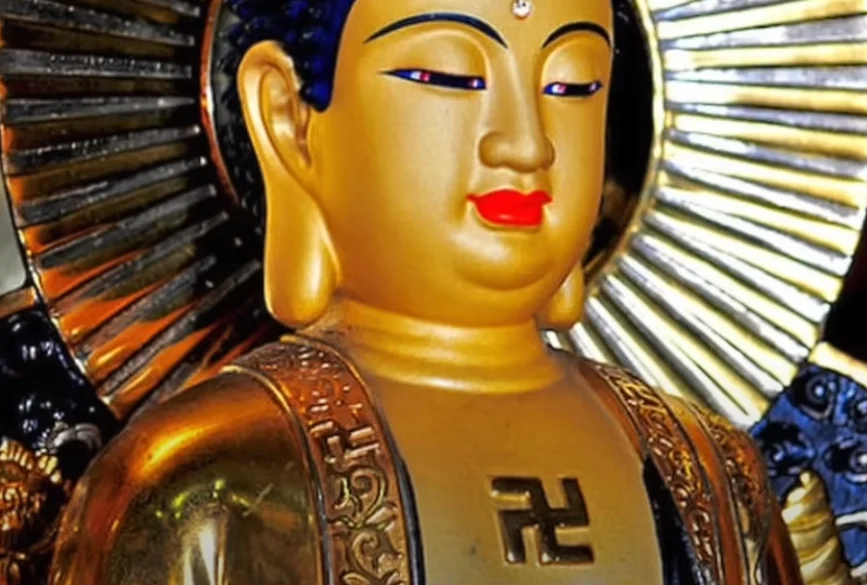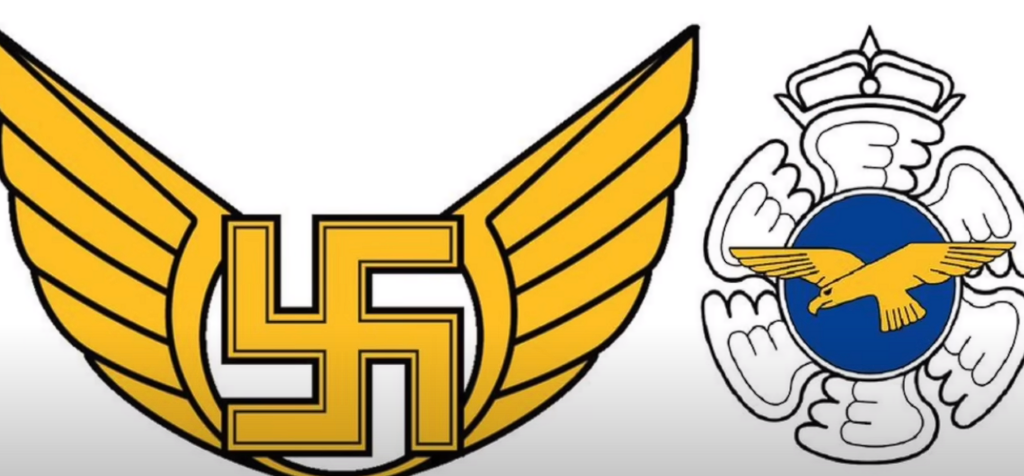The symbol of the swastika, often immediately associated with the atrocities of Nazi Germany, carries a much broader and older history that spans across cultures and millennia. This ancient symbol, with its roots tracing back about 11,000 years, has been a sign of luck, prosperity, and spiritual significance in various cultures around the globe. Its name, derived from the Sanskrit word “swastika,” underscores its deep connections to Indian culture and beyond.
Fast track:
TL;DR
Watch video

Interestingly, the swastika was a popular emblem well before its adoption by Adolf Hitler and the Nazi Party, appearing in diverse contexts from architectural decorations to company logos. Countries across Europe, Asia, and even America had their unique associations with the symbol. For instance, it adorned the uniforms of Boy Scouts in Britain, represented luck for the Irish through the Swastika Laundry Company, and even marked the aircraft and military badges in nations like Latvia, Poland, and Finland.

Finland’s relationship with the swastika is particularly noteworthy. Introduced by Count Eric von Rosen, a symbol of good luck and protection, the Finnish Air Force adopted the swastika in 1918, two years before the Nazis. This adoption was devoid of any political or ideological connotations that the symbol later acquired. Von Rosen, fascinated by Viking history and symbolism, chose the swastika for its ancient meanings rather than the ideologies it came to represent in the 20th century.
Despite the swastika’s ancient origins and varied meanings, its appropriation by Nazi Germany has left an indelible mark, leading to its removal or revision in many contexts post-World War II. In Europe, denazification efforts sought to erase Nazi symbols, including the swastika, from public and military insignia. Finland, however, presents an interesting case of a country that has managed to retain its historical use of the symbol in certain military contexts, albeit amid growing pressures and calls for its complete removal.

The persistence of the swastika in Finnish military heraldry, particularly within the Air Force Academy and certain official flags, speaks to a complex legacy. It underscores a broader challenge in reconciling the symbol’s ancient, positive meanings with its 20th-century appropriations. As nations grapple with historical symbols and their meanings, the story of the swastika in Finland highlights the tension between historical identity and the global movement towards historical revisionism.

The debate around the swastika in Finland is not just about a symbol but about how history is remembered and represented. While some argue for the erasure of symbols tainted by association with Nazism, others advocate for education and understanding of their broader historical contexts. This dilemma reflects broader questions about memory, identity, and the power of symbols to convey complex histories and values.
Watch video
TL;DR
- 🚩 Unlikely Emblem: The video discusses the surprising use of the swastika by the Finnish Air Force, highlighting that Finland was the last European country to feature the swastika in a military context, unrelated to Nazi Germany.
- 🌍 Historical Symbolism: The swastika, an ancient Eurasian religious symbol dating back around 11,000 years, was widely used across cultures, most often representing luck.
- 🎨 Widespread Adoption Pre-Nazis: Before the Nazi appropriation, the swastika was popular worldwide, symbolizing various meanings from luck to heritage in countries such as Denmark, Ireland, Latvia, Poland, Russia, the UK, Canada, and the USA.
- 🔍 Finnish Air Force Legacy: Finland’s adoption of the swastika predates Hitler’s use by two years, introduced by Count Eric von Rosen as a symbol of luck. It became a part of Finnish military insignia, deeply rooted in the country’s aviation history.
- 🔄 Shift in Symbolism: Post-WWII, the swastika’s association with Nazi Germany led to its removal and stigmatization worldwide. Finland, however, maintained the symbol in specific military contexts until recent years.
- 📜 Modern Reconsiderations: Amidst pressures and historical revisionism, Finland has largely phased out the swastika from its military, except for certain honors and awards, reflecting a delicate balance between heritage and contemporary sensitivities.
